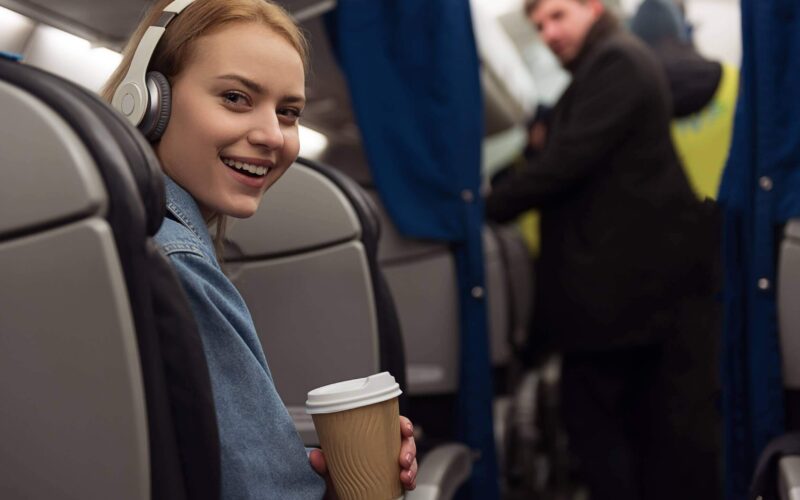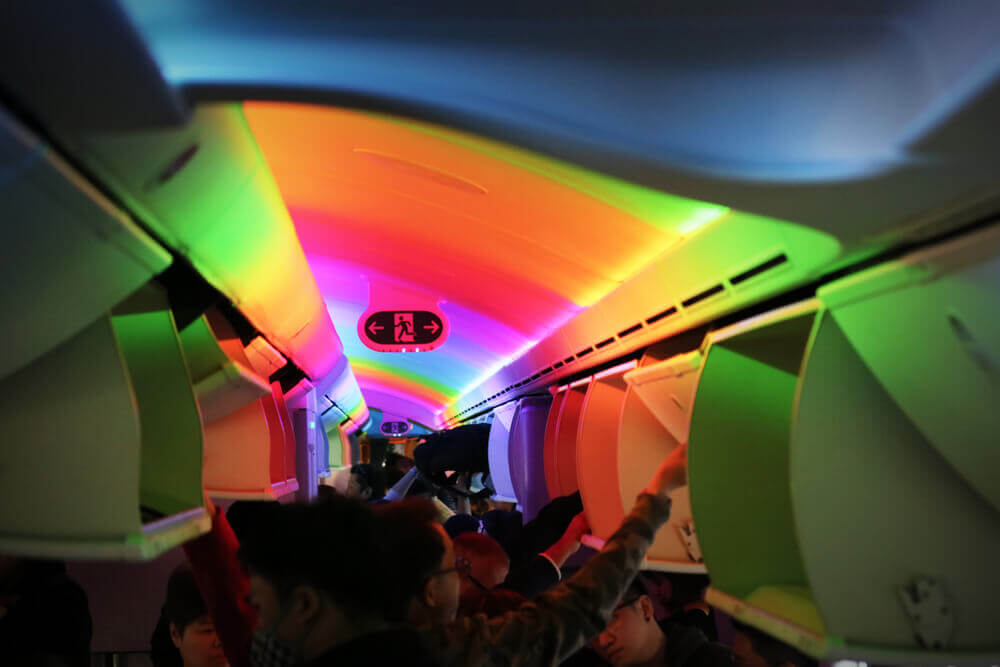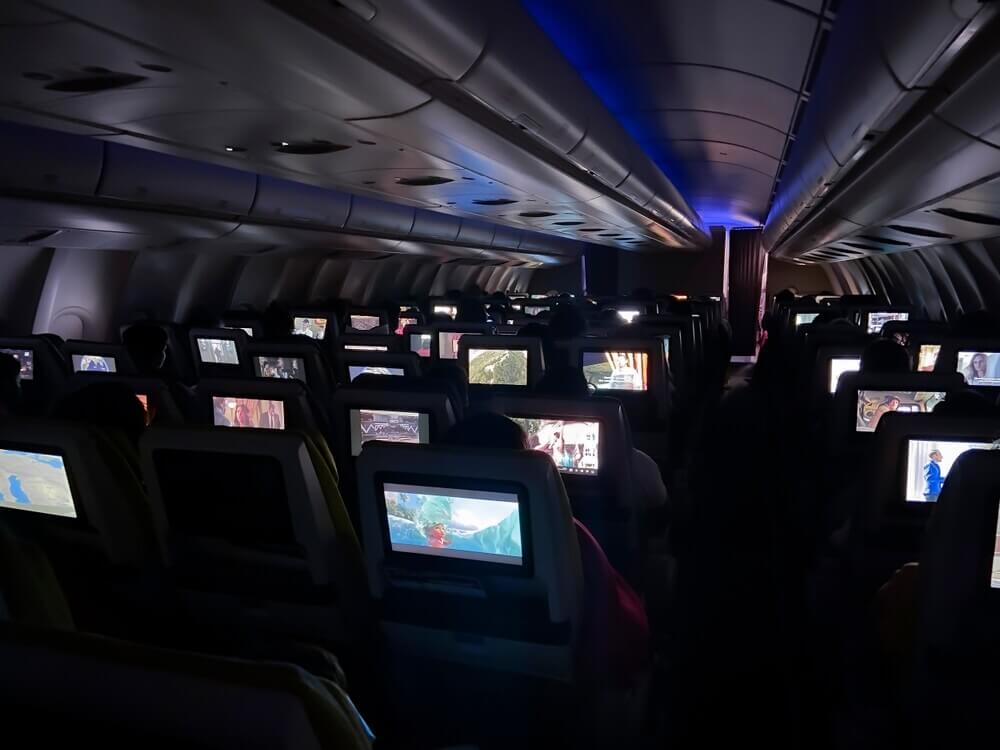The passenger experience through air travel has changed a lot over the course of a century. While the golden era of flying is often thought of as a luxury relegated to the past, there have been a number of significant developments in recent years aimed at enhancing passenger comfort.
September marks innovation month at AeroTime where our journalists are exploring advancements across the aviation industry. Here, our columnist Alec Wignall selects 10 innovations that have improved the passenger experience, helping to make today’s flying journeys far more comfortable.
10. Twilight check-in
With airport queues more of a concern than ever, combined with global staff shortages in the sector, those keen to ease the stress of the airport journey should check out ‘twilight bag drop’ options with airlines.
This recent service allows you to drop your bags off the night before you travel when the airport is quieter, a handy option for those staying near to the airport and wanting to avoid the queues at the check-in desk during the daytime.
9. Luggage tags
While we’re on the subject of luggage, for passengers with precious cargo or those simply conscious of the horrors of losing luggage, you can now buy trackers and tags to insert into your hold baggage thanks to the latest technology.
In the event the bags don’t arrive on the carousel at your destination, you can track their location. This is particularly handy if you have transited through one or more airports.
Image by Have a nice day Photo / Shutterstock.com
8. In-flight showers
For the lucky few travelling First Class with Emirates on its Airbus A380 fleet, the Middle Eastern carrier provides a shower in the Upper Deck lavatory, accompanied of course by top skincare and amenity products.
What better way to ensure you arrive at your destination refreshed than taking a luxurious shower at 38,000ft?
7. Onboard Wi-Fi
There are many people who find the prospect of going as long as 20 hours without Wi-Fi appealing. But for others, having to be without access to emails or the internet is a terrifying thought.
To cater to the latter, some airlines now offer in-flight Wi-Fi, depending on your travel class and airline frequent flyer status there are different prices and usage limits.
Aircraft use both satellites and air-to-ground stations to provide onboard connectivity. While onboard Wi-Fi is hardly capable of streaming, it is sufficient to access emails and messaging.
6. Airline apps
Nowadays, the novelty of having paper boarding passes has mostly become a thing of the past. As well as mobile boarding passes, customers can do almost anything from their smartphone if they download the airlines’ app.
Airline apps allow customers to track flights, order food, check-in, purchase add-ons and, in the event of delayed or cancelled flights, some will automatically prompt the customer to select food vouchers, hotel accommodation, refunds and rebooking options instantly, without the need to contact customer services or find a help desk.
5. Lower cabin pressure altitude
Something you might not know when travelling is that modern next-generation aircraft are kinder to your body.
Aircraft such as the Boeing 787, Airbus A350 and A380, which are made from carbon fiber and composite fuselage sections, have a lower cabin pressure altitude, approximately 6,000ft, compared to the typical 8,000ft.
The lower cabin pressure altitude means more oxygen for your body, more moisture in the air and generally better well-being on the flight, helping to reduce the effects of jetlag, tiredness, and dehydration.
4. Quieter aircraft
The latest generation aircraft are also much quieter than older types such as the Boeing 747. This is thanks to modern high bypass engines and refined aerodynamics of the fuselage which allow air to flow more efficiently around the aircraft in flight.
The quietest seats in the house? Try upfront, upstairs or any seat forward of the engines.
3. LED mood lighting
Airline cabins have improved vastly over the past few decades. One such improvement is the use of LED cabin lighting.
First introduced for their long-life and lighter weight, LEDs are now used as mood lighting, with different color and brightness settings to help your body adjust to time zones and create a calming ambience on board.
Emirates event went one step further, introducing LEDs in the ceiling to give the impression of glistening stars in the night cabin.
Image by icosha / Shutterstock.com
2. Lie-flat beds
Anyone who boards the aircraft and turns left will likely have appreciated the comfort of having a lie-flat bed on their journey.
First appearing on British Airways’ fleets in the 1990s the lie-flat bed has come a long way since its inception. Now widely found in both Business and First Class cabins, cabin crew will even make up the bed for you to catch some sleep.
In a boost for economy passengers, earlier this year Air New Zealand announced plans for economy lie-flat ‘pods’ on long-haul flights with economy passengers able to book a four-hour slot at an additional cost to catch some sleep.
1. Individual TV screens
It is hard to imagine not having your own TV screen on a long-haul flight, but not too long ago many airlines had only a few large screens in the cabin playing one or two films during the flight.
Can you image not having your own TV screen on a long-haul flight? Image by Horizon_Illustration / Shutterstock.com
In-flight entertainment systems (IFEs) were not only expensive but added weight to the aircraft. The miles of intricate wiring also presented potential fire risks.
When individual screens were eventually installed, they were poor resolution and small in size, with memory boxes taking up valuable leg room under some of the seats.
Today, in-flight entertainment is one of the biggest selling points of any long-haul airline. Most IFEs offer the latest blockbusters and series and include vast music libraries as well as hundreds of puzzles and games to keep you entertained. Some airlines even offer live entertainment and sport onboard.
Thanks to improvements in seat designs, the individual screens are now bigger than ever before and most are accompanied by charging ports for your tech devices, something no one could imagine being without now!



